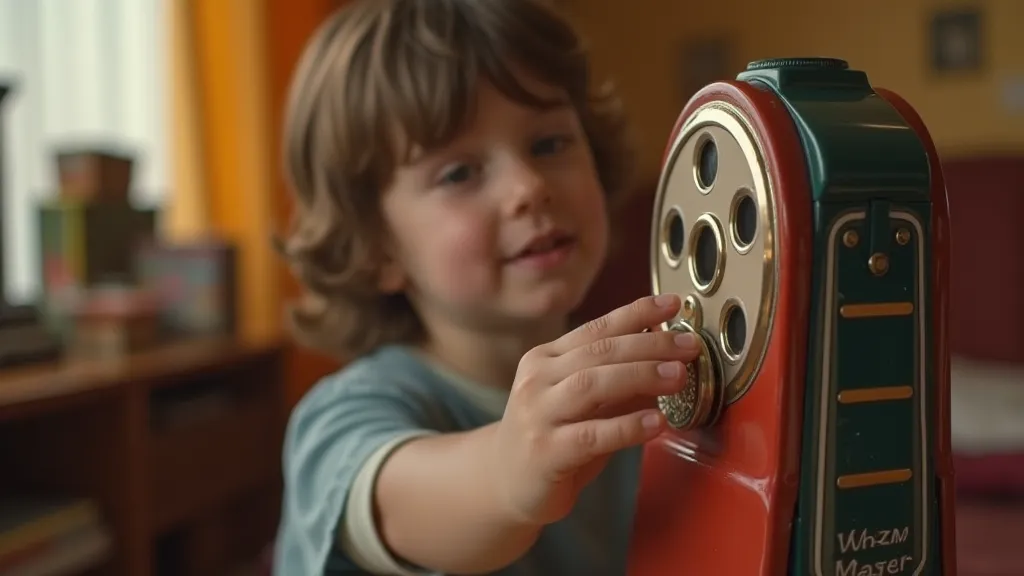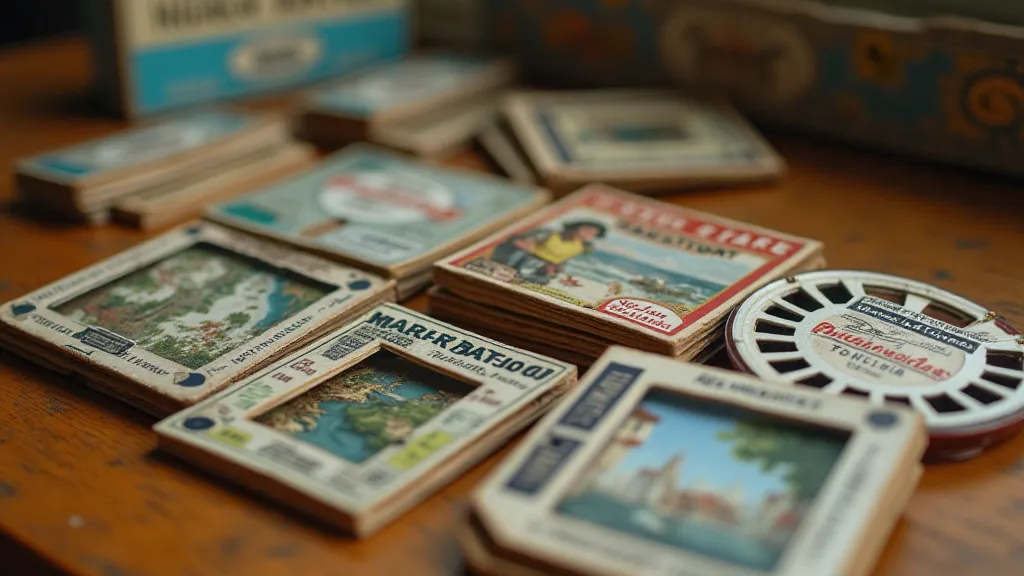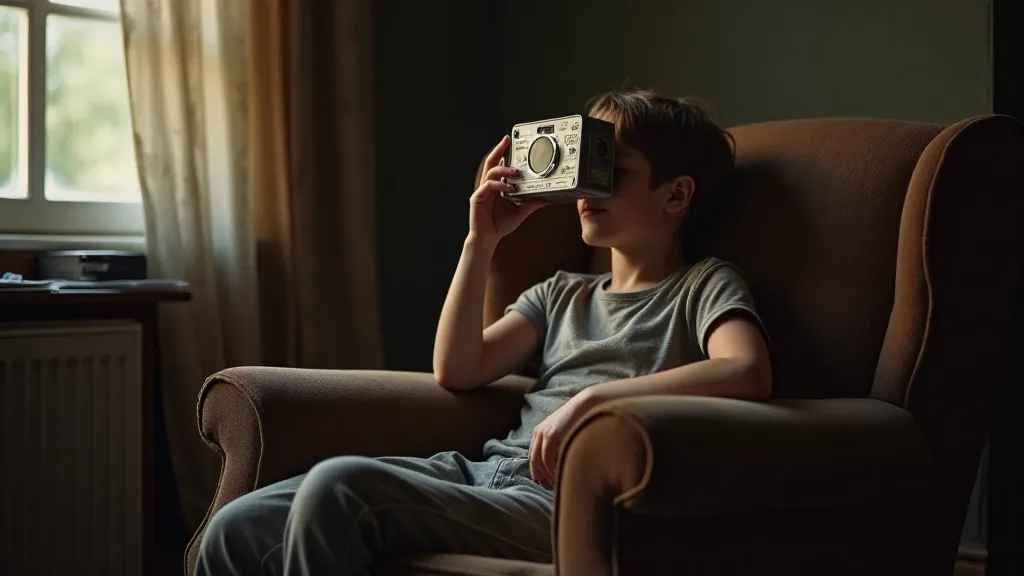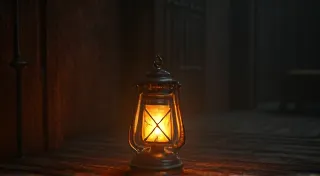The Lens of Childhood: Examining the Psychological Impact of Immersive View-Master Experiences
There’s a peculiar magic held within a View-Master reel. It’s not merely a strip of cardboard images; it's a portal. For generations, children have peered through that circular lens, transported to exotic locales, thrilling adventures, and the quiet beauty of natural wonders. While many consider it a vintage toy, the View-Master offered something far more profound than simple entertainment – a unique blend of visual stimulation and imaginative space that left an indelible mark on the psychological development of countless children. This isn't just about collecting View-Master reels; it's about understanding the power they held, and still hold, to shape perception and ignite the spark of wonder.

A Brief History and the Rise of Immersive Storytelling
The View-Master, invented by Hans A. Feichtinger and later developed and popularized by Sawyer's View-Master Viewers, Inc. in the 1930s, emerged during a time of significant cultural shifts. The Great Depression had instilled a yearning for escape, and burgeoning advancements in photography and printing technology made mass-produced, colorful visuals accessible to the masses. Initially, the reels showcased stereoscopic images of artwork, but the focus quickly shifted to landscapes, travel destinations, and eventually, licensed properties – Disney characters, national parks, and even historical events.
What distinguished the View-Master wasn’t just the novelty of 3D imagery, but the way it fostered a deeply personal and immersive experience. Unlike passive forms of entertainment like television, the View-Master demanded active participation. The child rotated the reels, manually progressing through the story or panorama. This small act of agency – the power to control the narrative, albeit in a limited way – contributed significantly to the psychological impact. It wasn't just *seeing* the Grand Canyon; it was actively *exploring* it, one image at a time. This subtle involvement cultivated a sense of ownership and connection to the experience.
The Psychology of Wonder and Escapism
Childhood is a period of intense learning and development, a time when the imagination flourishes and the world is viewed through a lens of limitless possibility. The View-Master tapped directly into this psychological landscape. Each reel offered a curated "experience," presented as an invitation to explore worlds beyond the child’s immediate surroundings. For a child growing up in a rural area, a View-Master reel showcasing the bustling streets of New York City could be a transformative experience, expanding their understanding of the world and igniting a desire to learn more.
The escapism offered by the View-Master shouldn’t be viewed as a negative. Instead, it represents a healthy coping mechanism, a way for children to temporarily transcend the limitations of their environment and explore possibilities. During times of hardship or boredom, the View-Master provided a refuge, a place where anything was possible. The immersive nature of the experience—the feeling of *being there*—amplified this effect, creating a powerful sense of detachment from everyday concerns. This isn't simply nostalgia for a toy; it’s an appreciation for the genuine solace and inspiration these reels offered.
Craftsmanship and the Resonance of Tangibility
In an age dominated by digital screens and fleeting online content, the physicality of a View-Master reel carries a particular resonance. The sturdy cardboard, the satisfying click as the reel advances, the subtle scent of aged paper – these tactile elements contribute to the sensory richness of the experience. Unlike the ephemeral nature of digital imagery, a View-Master reel is a tangible object, a piece of history that can be held in your hand and passed down through generations.
The quality of the reels themselves varied. Early reels, particularly those from the 1930s and 1940s, are renowned for their superior print quality and often exhibit a richness of color that’s remarkable considering the printing technology of the time. Collectors often seek out these vintage reels, not just for their rarity, but for the craftsmanship that went into their creation. Recognizing the subtle differences in printing techniques – the sharpness of the images, the vibrancy of the colors – is part of the collecting journey, an appreciation for the skill and dedication of the artisans who brought these miniature worlds to life.

The Legacy and Continued Appeal
While the View-Master’s popularity waned with the rise of television and later, the internet, it continues to hold a special place in the hearts of many. The renewed interest in vintage toys and collectibles has fueled a resurgence in View-Master collecting. People aren’t just acquiring these reels as mere objects; they’re seeking to reconnect with a sense of wonder and nostalgia, to relive the magic of childhood, and to share that experience with a new generation.
Restoring a vintage View-Master reel, carefully cleaning away dust and grime, can be a surprisingly therapeutic process. It’s a chance to connect with history, to appreciate the craftsmanship of the past, and to preserve a piece of cultural heritage. Even a simple act like organizing a collection, carefully cataloging each reel by subject and production date, can be a rewarding exercise in historical research and personal reflection. The value isn't always monetary; the true worth lies in the memories evoked and the connection to a simpler time.

More Than a Toy: A Window to the Past
The View-Master wasn’t just a toy; it was a portal, a window to the past, and a catalyst for imagination. It offered a unique blend of visual stimulation, imaginative space, and tangible interaction that left an indelible mark on the psychological development of countless children. As we collect and preserve these vintage reels, we’re not just safeguarding pieces of cardboard; we’re preserving a legacy of wonder, escapism, and the enduring power of the human imagination. The lens of childhood, as seen through a View-Master, continues to offer a vibrant and compelling perspective on the world.





